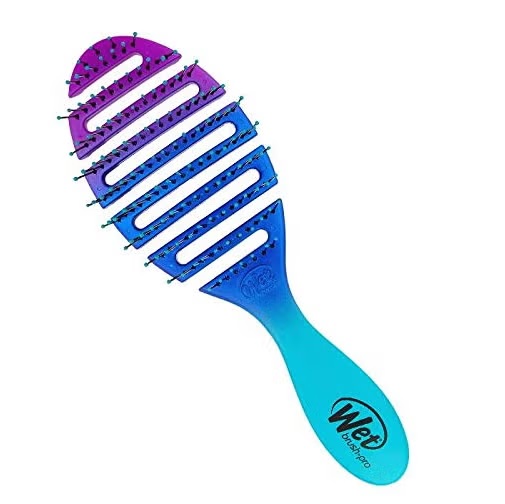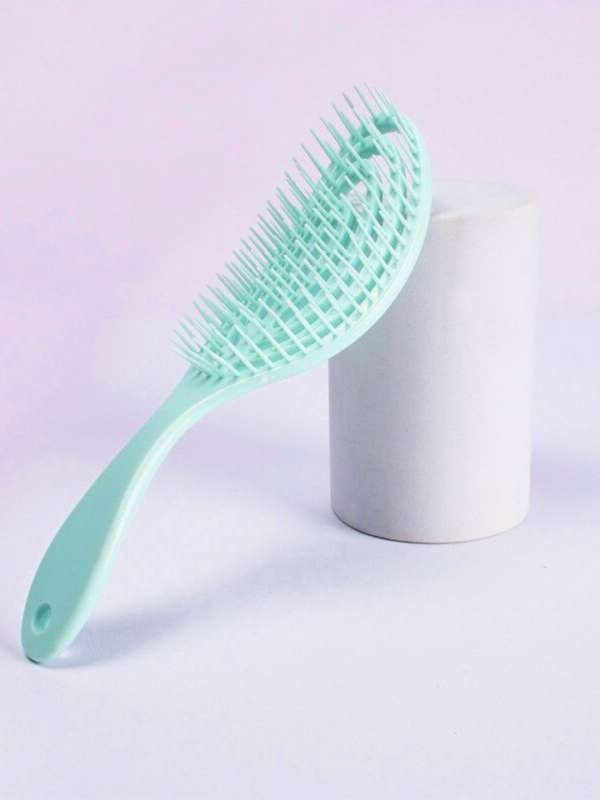If you’ve ever tried brushing wet hair and ended up with broken strands or a painful mess, you’re not alone. That’s where the wet brush comes in. This simple beauty tool has become a must-have for people with all hair types, especially those who want to take better care of their hair.
In this article, we’ll break down everything you need to know about wet brushes — what they are, how they work, and why so many people love them. Whether you have straight, curly, or thick hair, a wet brush might just become your new favorite hair tool.
Table of Contents
What Is a Wet Brush?
A wet brush is a specially designed hairbrush made for use on wet hair. Traditional brushes can be too harsh and pull on damp strands, causing damage and breakage. But wet brushes are made with soft, flexible bristles that glide through hair without pulling or tugging.
Wet brushes are often lightweight, have comfortable grips, and are gentle enough for even the most sensitive scalps. Many people also use them on dry hair because of how gentle they are.
Why You Should Use a Wet Brush
Using a wet brush isn’t just about comfort — it also helps improve the health and look of your hair. Let’s look at the biggest benefits.
Reduces Breakage
Wet hair is more fragile than dry hair. When you use a regular brush, the pulling and tugging can cause hair to snap. A wet brush is much gentler and helps prevent breakage, keeping your strands strong.
Detangles Hair Easily
One of the biggest reasons people use a wet brush is for detangling. Whether your hair gets tangled after a shower, swim, or windy day, a wet brush makes it easy to smooth out knots without pain.
Safe for All Hair Types
Wet brushes are safe for all hair types — straight, wavy, curly, or coily. They work especially well for people with thick or curly hair who often struggle with tangles.
Gentle on the Scalp
The soft, flexible bristles on wet brushes don’t scratch or hurt your scalp. In fact, they can even give your scalp a light massage, which feels relaxing and can help improve blood flow.
How a Wet Brush Works
So what makes a wet brush different from a regular brush? The secret is in the bristles.
Flexible Bristles
Wet brushes use thin, bendable bristles that move with your hair. Instead of forcing through tangles, they gently bend to avoid pulling.
Ball-Tipped Ends
Many wet brushes have small ball tips on the ends of the bristles. These protect your scalp and help the brush glide smoothly.
Vented Designs
Some wet brushes have vents or holes that allow air to pass through. This is helpful if you use a blow dryer because it helps dry your hair faster and evenly.
When to Use a Wet Brush
You can use a wet brush in more ways than just after a shower.
After Showering
This is the most common time to use a wet brush. After towel-drying your hair, gently brush through starting at the ends and working your way up.
After Swimming
Salt water and chlorine can make your hair tangled and dry. A wet brush helps smooth it out without causing extra damage.
While Applying Conditioner
Some people like to use a wet brush in the shower when applying conditioner. It helps spread the product evenly and makes sure every strand is coated.
On Dry Hair
Wet brushes aren’t only for wet hair. They’re also great for dry hair, especially for kids or people with sensitive scalps who want a soft and gentle brush.
How to Use a Wet Brush the Right Way

To get the best results and protect your hair, follow these simple steps.
Towel Dry Your Hair
After washing your hair, gently blot it with a towel to remove excess water. Avoid rubbing too hard.
Start from the Bottom
Always start brushing from the tips of your hair and work your way up. This helps remove tangles gently without pulling.
Use Small Sections
If your hair is thick or very tangled, brush it in small sections. This gives you more control and prevents pulling.
Be Gentle
Let the brush do the work. Don’t force it through tough knots. If needed, use your fingers to loosen large tangles before brushing.
Wet Brush vs Regular Brush
You might be wondering if a wet brush is really that different from a normal brush. Here’s a quick comparison.
| Feature | Wet Brush | Regular Brush |
|---|---|---|
| Bristles | Soft, flexible | Firm, stiff |
| Best For | Wet or dry hair | Dry hair |
| Scalp Feel | Gentle and soothing | Can be rough |
| Tangle Removal | Easy and painless | Can cause pulling and breakage |
| Hair Damage | Minimal | Higher chance of damage |
As you can see, a wet brush is the clear winner when it comes to caring for your hair gently.
Who Should Use a Wet Brush?
Wet brushes are great for almost everyone, but they’re especially helpful for:
- People with long or thick hair
- Kids who hate brushing their hair
- Curly-haired individuals
- Anyone with a sensitive scalp
- Swimmers or beach-goers
- People who style or color their hair often
Different Types of Wet Brushes
There are several kinds of wet brushes available. Here are a few popular ones:
Original Detangler
This is the classic wet brush most people start with. It has soft bristles and works for all hair types.
Shower Flex Brush
Designed for use in the shower, this brush is waterproof and flexible. Great for brushing while conditioning.
Paddle Brush
Larger and flatter, this brush works well for longer hair or if you want to dry your hair faster.
Mini or Travel Size
Perfect for your bag, gym locker, or purse. Small but still effective.
Wet Brush for Kids
If you’ve ever had a child cry during hair brushing, a wet brush might be the answer. Many brands make wet brushes just for kids, often with fun colors, cartoon designs, and smaller sizes. They help make brushing less stressful for both you and your child.
How to Clean Your Wet Brush
Like any hair tool, your wet brush needs regular cleaning to work well and stay hygienic.
Remove Hair
Use your fingers or a comb to take out trapped hair from the bristles.
Soak in Warm Soapy Water
Fill a bowl with warm water and mild shampoo. Soak your brush for about 10 minutes.
Scrub Gently
Use a toothbrush or small cleaning brush to scrub between the bristles.
Rinse and Dry
Rinse the brush with clean water and let it air dry completely before using it again.
Final Thoughts: Is a Wet Brush Worth It?
Absolutely! A wet brush is a small investment that makes a big difference in your hair care routine. It helps you avoid breakage, reduce pain, and keep your hair looking smooth and healthy. Plus, it’s gentle enough for everyone in the family.
Whether you’re brushing out post-shower tangles, working through knots after a swim, or just want a soft, kind brush for everyday use, the wet brush is a fantastic choice.
FAQs About Wet Brushes
Can I use a wet brush on dry hair?
Yes! While it’s designed for wet hair, it works just as well on dry hair too.
Does a wet brush work for curly hair?
Definitely. Many curly-haired people love the wet brush because it gently detangles without ruining their curls.
How often should I replace my wet brush?
You should replace it every 6–12 months, or sooner if the bristles become bent or worn out.
Are wet brushes good for men?
Yes! Men with medium to long hair can benefit from a wet brush, especially if they deal with tangles or sensitive scalps.










